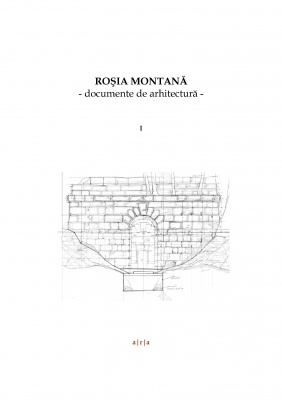
The archaeological vestiges of ancient Alburnus Maior, today Roşia Montană, have brought the site to international notoriety, transforming it in a highlight of European and universal cultural heritage. The precious archaeological heritage, the historic monuments of Roşia Montană, its vernacular architecture emphasised by sensible peculiarities of the spirit of place, the industrial landscape of traditional gold mining, make of this place the mirror of a type of particular coexistence of diverse communities which have left, together, their imprint on the historic environment.
Just as in antiquity people came to work here, in the galleries of the Roman mines, from various provinces of the empire - from the Pannonic or from the Dalmatian areas -, in the modern era miners from the provinces of the Habsburg Empire gathered here. A true history of mentalities can be decrypted in the structure and aesthetic appearance of façades in the historic centre or in the stylistic articulations of the seven churches, places of worship built by virtue of the different communities of Roşia Montană and the neighbouring village of Corna. Coming down to this day from the 18th century or edified later on, the architecture of façades shows surprising reflexes of historic architecture, be it baroque, or classicizing, or traditional Romanian.
This precious built cultural heritage made the subject of the third edition of ARA Summer Schools, from August 17th to 23rd 2009, following the two previous editions focusing on experimental architecture-archaeology, in the Dacian site of Cetatea Zânelor (Fairies Fortress), Covasna.
At Roşia Montană, 20 participants, students of "Ion Mincu" University of Architecture and Urbanism of Bucharest, Faculty of Architecture, have been involved in documenting - by architecture surveys, observation files and photographs - the religious, administrative-public and industrial heritage. The following monuments were documented: the Unitarian, Reformed (Calvinist) and Orthodox churches of Roşia Montană and the Greek-Catholic one from Corna, all significant expressions of religious architecture of the Western Carpathians, dating back to the 18th and 19th centuries. The standing of civil architecture has bee documented at the administrative palace (built 1897), the old school (end 19th cent.), built, according to tradition, by Italian masons, as well as the former maternity ward, built at 1879 (?) as a well-to-do miners' family house. Of the system of hydro-technical works of traditional mining - the reservoirs built starting with mid 18th century on the slopes surrounding Roşia Montană - three were documented, Tăul Mare (the Grand Reservoir), Tăul Corna (Corna Reservoir) and Tăul Ţarina (Ţarina Reservoir). The dikes and the systems of water control and management make outstanding works of historic technical architecture.
The 2009 ARA Summer School was preceded by the campaign of architecture surveys organized by ARA in the summer of 2007. On that occasion a group of students at the faculties of architecture of Bucharest and Cluj-Napoca, tutored by members of the association, specialists in research and conservation of cultural heritage, drew up surveys of significant historic structures - traditional rural houses, houses with shops facing the main street or the central marketplace, as well as parish houses and one of the five worship places of the town, The Reformed (Calvinist) Church.
The programme of the summer school sought to document all the historic worship edifices still unsatisfactorily documented and not included in the Historic Monuments List. It is all the more regrettable that in the case of the Orthodox church of Corna - the oldest of the area, dating back to 1719 - the participants were denied access, making the surveying impossible.
The result of the two documentation campaigns is presented to the public in this first survey folder, a step forward to apprehending the architecture of Roşia Montană, both in view of a correct and comprehensive assessment of the outstanding value of the cultural heritage of this threatened site, and to stimulate and favour the real and effective protection of its remarkable monuments.
The programme of documentation of cultural heritage values of Roşia Montană will continue in the summer of 2010.
56 pages, format 24 x 34; text 10 pages; 46 plates
black and white
Romanian
ISBN 978-973-88465-3-1
Vol. I ISBN 978-973-88465-4-8
Full text available only in Romanian section of the site Index Preview How to order (Out of stock)



